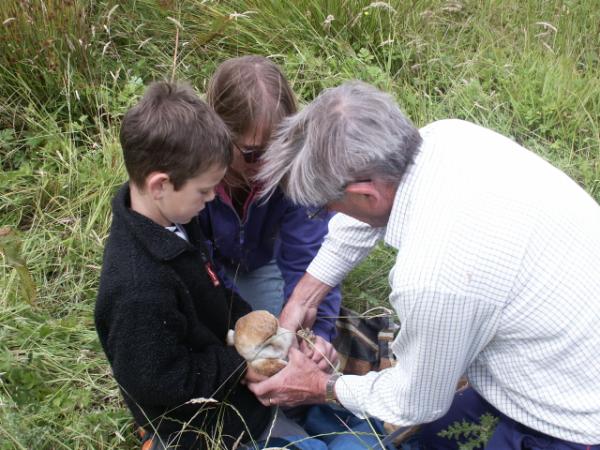Barn Owl Tyto alba
%20(480%20x%20640).jpg)
The Barn Owl is a very photogenic species and many people rate it as their favourite bird. In Cheshire it now has a rather different status as an icon for nature conservation. The rapid increase in population is an indicator of the amount of suitable habitat created in recent years, with uncropped grassland and field margins harbouring small rodents and providing good hunting territories for Barn Owls, as well as ideal areas for species such as Brown Hares Lepus europaeus and Grey Partridges Perdix perdix. Dense hedges and hedgerow trees are also important.
All of these habitats and species are recognised as vital components of biodiversity. The Cheshire region Biodiversity Partnership is promoting a series of Local Biodiversity Action Plans (LBAPs). These include Habitat Action Plans for unimproved grassland, cereal field margins, roadside verges and ancient and/ or species-rich hedgerows, and Species Action Plans for Barn Owl and Brown Hare, while the Grey Partridge is included in the farmland birds LBAP.
As well as loss of habitat, Barn Owls have been badly hit by a reduction in available nest sites. In the western counties of England, the traditional Barn Owl nesting sites have been in buildings such as barns, many of which have been tidied up or converted for human occupation. An important part of Barn Owl conservation, therefore, has been provision of nest boxes, in trees, on poles or in buildings. The Broxton Barn Owl Group now has 184 boxes in west Cheshire.
%20(516%20x%20600).jpg)
%20(450%20x%20600).jpg)
Large teams of volunteers monitor the boxes and as many natural sites as can be found, carefully watching from a distance and reporting on their occupation so that ringers can visit at suitable times. As well as ringing chicks and submitting nest records to the BTO's national collection, we attempt to catch as many adults as possible. Many adults sleep in the boxes, with their young, during daytime, while others use unoccupied boxes for roosting. Some of the adults are already wearing rings, giving valuable information on survival and site fidelity of the breeding adults, and recruitment to the breeding population. Several of the breeding birds were ringed as chicks the previous year, and are thus breeding at about ten or eleven months of age. This is quite common in Barn Owls, but most other large bird species do not breed until two years of age, or more. Their early maturity, and great fecundity - often producing broods of four chicks in years of high rodent populations - obviously aids the Barn Owl in increasing its population when conditions are favourable.
Most of the adults that have previously been ringed as chicks in the study area have moved around 5 or 6 km from their natal site. This dispersal is presumably the species' way of avoiding in-breeding and thus maintaining genetic diversity.
On the other hand, about half of the adults caught are not already wearing rings. If they were originally hatched within the study area, it must have been in nests that were not known about, possibly natural nests in trees. Alternatively, they could be old birds that have been present since before this study started, a few years ago.
%20(478%20x%20600).jpg)
Although they often hunt by day, they are mainly nocturnal and crepuscular, and obviously do not enjoy being out in bright sun:
.jpg)
Barn Owls feed almost exclusively on small mammals. One nest examined recently contained a recently killed field mouse Apodemus sylvaticus and a headless short-tailed field vole Microtus agrestis:
.jpg)
These birds had obviously had little difficulty in finding prey to feed their chicks.
Enjoying the privilege of handling these birds, specially protected as a 'Schedule 1 species' under the Wildlife & Countryside Act 1981, provides us with great educational opportunities:

and the chance to admire their spectacular plumage:
.jpg)
The chicks are covered in white down:
%20(357%20x%20600).jpg)
As the chicks grow in the nest, they gradually acquire the adult-like plumage, although still covered with tufts of soft white downy feathers:
%20(569%20x%20600).jpg)
%20upright%20(600%20x%20531).jpg)
We can also marvel at their adaptations, honed by millenia of evolution, including the sound-deadening apparatus on the outside of their longest primary feathers:
.jpg)
and their almost flat face, with asymmetrically placed ears for them to locate their prey in darkness:
%20(600%20x%20450).jpg)
%20(845%20x%20634)%20mod.jpg)
Members of Merseyside Ringing Group are very grateful to the members and volunteers of the Broxton Barn Owl Group, and the sympathetic landowners in west Cheshire, for all the work they put in to help this special bird.
David Norman.